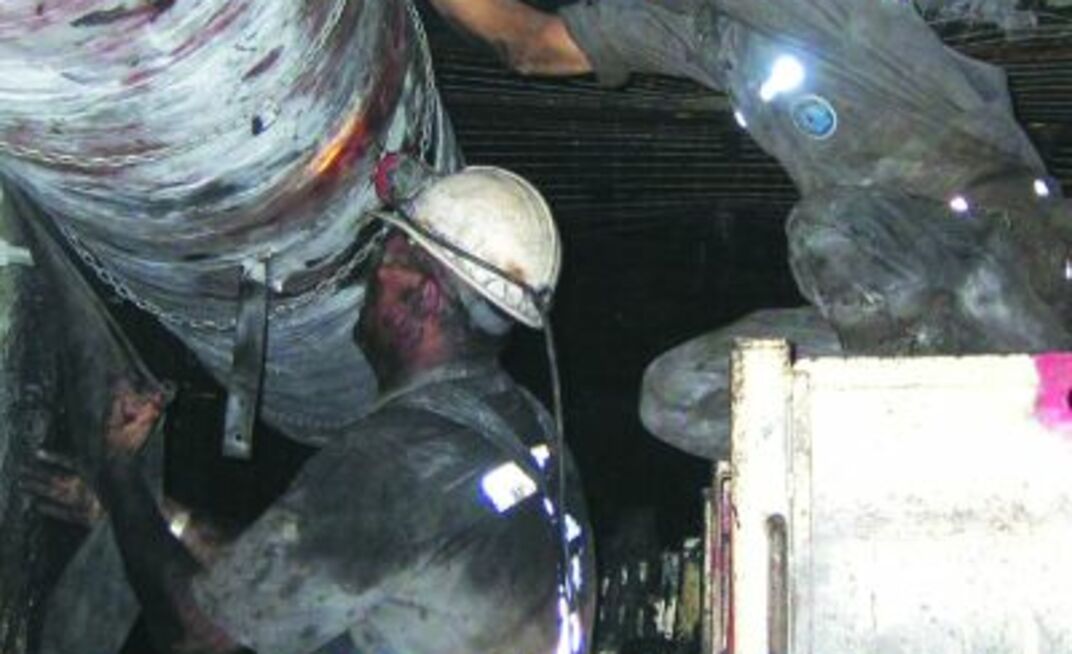Published in June 2006 Australian Longwall Magazine
Working with or near underground coal mining equipment is hazardous because of the multiple sources of energy and adverse environmental conditions. Of the 4169 injuries reported to Coal Services during the three years to June 2005, 447 were associated with continuous miners, 232 with LHD (load-haul-dump) vehicles, 140 with shuttle cars, and 140 with personnel transport – a total of 959, or 23% of all injuries reported during the period.
An analysis of the injury narratives accompanying these injury claims highlights a number of opportunities for controlling injury risks.
Using the frequency of reported injuries for the prioritisation of risk control strategies has limitations because of the tendency to underestimate the importance of relatively uncommon but potentially high consequence events. Injury reports also underestimate the contribution of risk factors such as whole body vibration, which have a long-term cumulative contribution to an elevated risk of injury. However, taking these limitations into consideration, the results of the injury narrative analysis suggests the following hazards as the highest priority for elimination or control:
handling continuous miner cable;
strain while bolting;
slipping off continuous miner platform;
inadvertent or incorrect operation of bolting controls, and operation of controls while a person is in a position of danger;
hitting potholes or other roadway abnormality;
collisions while driving underground vehicles.
Cable Handling
In the three years to June 2005, strains occurring while handling continuous miner cable accounted for 96 injuries in NSW coal mines. The severity of injuries associated with handling cable varies from relatively minor shoulder strains to serious back injuries.
Whilst the cumulative nature of most musculoskeletal injuries implies that other manual tasks are likely to have also contributed to these injuries, there is no doubt that handling continuous miner cable represents a high risk of injury, and this is consistent with biomechanical analysis of the task.
Engineering controls are required to eliminate or reduce manual cable handling. The provision of monorails to carry continuous miner services would likely reduce injuries caused by manual cable handling; however, a method of installation and retrieval of the monorail is required which avoids introducing additional musculoskeletal injury risks.
Strain while bolting
Strains while bolting were described as the injury mechanism in 54 injury reports in NSW in the three years to June 2005. These injuries are likely to be a consequence of the requirement for the shoulder to frequently adopt a posture involving a combination of flexion and lateral flexion to place drill steels and bolts in the chuck, with the resulting requirement of relatively high shoulder torque to perform the task. Alterations to platform and/or bolting rig design to reduce the reach distance associated with placing drill steels and bolts is justified to reduce this injury risk.
Slipping off continuous miner platform
Slipping off the continuous miner platform, whether during access or egress or during operation, was the cause of 60 injuries in the three-year period and these injuries justify attention to improving access systems and giving consideration to installation of handrails. Whilst MDG1 specifies handrails for platforms higher than 1.2m, the injury experience in NSW mines suggests this is insufficiently protective, and fall protection may be justified for all continuous miner platforms.
Roof bolting
Inadvertent or incorrect operation of bolting controls, and operation of controls while person is in position of danger, are the cause of some accidents. “Caught between” injuries associated with roof or rib bolting were reported by NSW mines on 52 occasions in the three years to June 2005. The resulting injuries varied in severity, but have the potential to cause permanent disability and fatalities.
The hazards associated with inadvertent operation of controls, operation of incorrect controls, operating controls in an incorrect direction, or whilst a person is located in a pinch point, have long been recognised.
Bolting controls require guarding to prevent inadvertent operation (while still allowing access for intentional operation). Bolting machine controls require standardisation across manufacturers to an appropriate layout (and provide shape and length coding) to reduce the probability of operation of the wrong control. This standardisation must carefully consider direction compatibility principles to reduce the probability of operation of controls in the wrong direction.
Improvements to bolting machine design are required to guard pinch points and provide interlocks (eg two-handed fast feed) to reduce the probability and consequences of intentional or unintentional control operation whilst the operator or other person is in a hazardous location.
Whilst standardisation of bolting controls is desirable, differences between manufacturers in current designs make this a sensitive issue. There are also at least two open questions regarding principles for optimal control layout. One is whether control layouts on different sides of a machine should be mirrored; the second concerns the appropriate relationships between control and response direction.
Hitting potholes or other roadway abnormality
Drivers and passengers in vehicles in NSW underground coal mines suffered 169 injuries in the three years to June 2005 as a consequence of the vehicle encountering potholes or other roadway abnormalities. These injuries highlight the importance of maintaining roadway standards, because control at this level is most likely to be effective. Provision of vehicle suspension for shuttle cars, and improved...click here to read on.

























